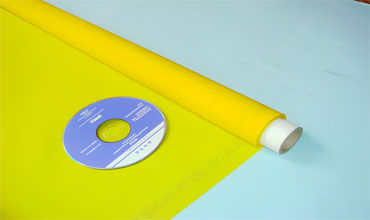Thermal transfer printing of polyester fabric
Oct. 14, 2019
Polyester fabric
Polyester, that is, polyester fiber, is a chemical synthetic fiber. As an important variety in textile fiber, polyester fiber is widely used in apparel fabrics and industrial products.
Because of its excellent shape-setting properties, the polyester yarn or polyester fabric has a flat, fluffy shape or pleats formed by shaping, and can remain unchanged even after repeated washing during use.
Polyester printing mesh generally uses disperse dyes and thermal transfer printing technology.
Disperse dye
Disperse dyes are classified according to application properties and can be classified into low temperature type (E type), high temperature type (S type) and medium temperature type (SE type). Due to the requirement of pure polyester fabric printing, disperse dyes have certain sublimation fastness.
The dye with too low sublimation fastness will stain the white ground during hot melt fixation, and the dye with low fixation rate will be smeared on the surface during the post-treatment washing. Therefore, the printing of polyester fabric is mostly medium temperature type (SE type). ) and high temperature type (S type) dyes for high temperature hot melt fixation.
Heat transfer printing
The transfer printing is a printing method in which a disperse dye or a coating is printed on paper according to a pattern, and a transfer paper is formed, and then the dye or the coating on the transfer paper is transferred to the textile under certain conditions.
Transfer printing In theory, there are four methods: melt transfer, peel transfer, semi-wet transfer and gas phase transfer. Among them, the most common method used in polyester fabrics is gas phase transfer, also called sublimation heat transfer, referred to as heat transfer.
The disperse dye on the transfer paper has volatility and has a large affinity for the polyester screen printing mesh. During the hot pressing of the two, the dye on the paper is transferred to the fabric by gasification-sublimation heat transfer.
Heat transfer printing is especially suitable for printing small batches. It does not require post-treatment after printing, which reduces pollution and belongs to clean processing. The patterns of heat transfer printing are colorful, the layers are full, the performance of the patterns is strong, and the printing points are few, which is suitable for printing realistic and artistic patterns and geometric patterns.
POLYESTER SCREEN PRINTING MESH
Heat transfer printing requirements for polyester fabrics
·01 The general transfer printing factory has no pre-treatment equipment, so the polyester fabric should be machine-washed, bleached (dyed), shaped, soft and pre-processed before printing.
·02 Printed base fabrics can only be used in light-colored fabrics such as bleaching and white polyester screen printing mesh. Light-colored patterns cannot be printed on dark fabrics.
·03 The temperature of the heat transfer printing is generally in the range of 150 to 200 °C. Due to the high temperature, various coatings of the fabric will be destroyed, so when it is necessary to re-process, it is generally printed first, followed by coating, compounding and other finishing processes.
·04 During the thermal transfer printing process, different fabrics will have different shrinkage rates at high temperatures, generally considering a shrinkage of 2-3%. For printed fabrics with high requirements on the width of the door or the pattern, the merchandiser must pay special attention when setting the dyeing factory.
·05 In the case of thermal transfer printing, the transfer paper and ink used are different, and the effect after fabric printing is different.
The quality of the printed paper affects the effect of the pattern, the poor quality of the transfer paper has more color points and sizing, and it is easy to produce color points; the good quality transfer paper is all wood pulp paper, colorless after fabric printing , no white spots.
·06 When printing, the digital sample is only for the convenience of confirming the pattern, and there will be some differences with the large sample. The transfer printing of polyester fabrics is ultimately based on the large-size goods when the printing factory is used for coloring.








